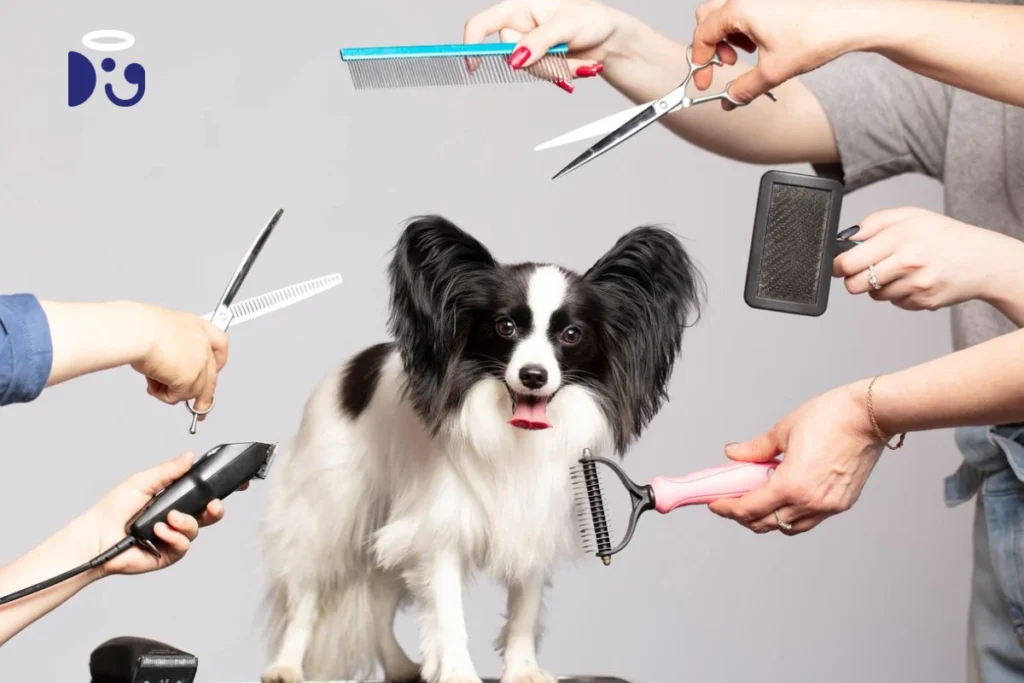In modern society, pets have become important members of many families. As people’s demands for their pets’ quality of life continue to rise, the pet grooming industry has gradually emerged and thrived. Pet grooming is not just about making pets look more attractive; it is also related to their health, hygiene, and mental state. This article explores the importance of pet grooming, common grooming services, and how to choose the right pet grooming service.

I. The Importance of Pet Grooming
- Maintaining Pet Health
A pet’s fur, nails, ears, and teeth require regular care; otherwise, they may easily breed bacteria or cause diseases. For example:
- Fur care: Long-haired dogs such as Poodles and Bichon Frises, if not trimmed and brushed regularly, can develop matted fur, which may even lead to skin inflammation.
- Nail trimming: Overgrown nails can affect a pet’s ability to walk and may even pierce their paw pads, causing infections.
- Ear cleaning: Floppy-eared dogs (e.g., Cocker Spaniels) in particular have poor air circulation in their ear canals, making them prone to ear mites or fungal infections.
- Dental care: Tartar and bad breath are common issues in many pets. Regular brushing or professional teeth cleaning can prevent oral diseases.
- Enhancing Pet Comfort
Like humans, pets need to stay clean and fresh. Regular bathing and brushing reduce problems such as skin itching and parasite infections, keeping pets more comfortable. - Strengthening the Bond Between Pets and Owners
The grooming process is not just about cleaning—it is also a form of interaction. When owners personally brush or bathe their pets, or work with professional groomers to make their pets look more lively, pets can feel their owners’ care and develop greater trust.
II. Common Pet Grooming Services
Pet grooming is more than just a “haircut”; it includes several professional services. Common ones are:
- Basic Care
- Bathing: Using pet-specific shampoo to avoid skin irritation from human shampoo.
- Drying: Thoroughly drying fur to prevent moisture-related skin diseases.
- Brushing: Removing dead hair and mats, and promoting blood circulation.
- Styling and Trimming
Based on the pet’s breed and the owner’s preferences, groomers design suitable styles, such as:
- Teddy Bear Cut (a classic style for Poodles)
- Lion Cut (for Schnauzers, Pomeranians, etc.)
- Smooth trimming for short-haired dogs (e.g., Labradors, Dobermans)
- Deep Care
- SPA Bath: Using essential oils or conditioner to make fur softer and shinier.
- Tear Stain Removal: For breeds prone to tearing (e.g., Bichon Frises, Shih Tzus), professional products are used to clean the eye area.
- Paw Care: Trimming paw hair to prevent slipping or dirt buildup.
- Health Checks
Professional groomers may spot health issues during grooming, such as skin redness, ear mites, or fleas, and promptly advise owners to take their pets to a vet.
III. How to Choose the Right Pet Grooming Service?
- Choose a Formal Pet Grooming Salon
- Check the groomer’s qualifications (e.g., professional training certificates).
- Observe if the salon environment is clean and properly disinfected.
- Ensure pet-specific grooming products are used to avoid low-quality products that may harm the pet’s skin.
- Select Services Based on the Pet’s Personality
- Shy or sensitive pets: Opt for a quiet salon with experienced groomers, or even in-home grooming services.
- Energetic or restless pets: Groomers should be patient and use gentle methods to calm the pet, avoiding stress.
- Groom Regularly, but Not Excessively
Long-haired dogs are recommended to be groomed every 4-6 weeks, while short-haired dogs can be groomed every 2-3 months.
Avoid frequent dyeing or excessive trimming, as these may affect the pet’s health.
IV. Basic Grooming Skills Owners Can Learn
If you don’t want to visit a grooming salon every time, owners can learn basic care skills, such as:
- Brush their fur 2-3 times a week (long-haired dogs are recommended to be brushed daily).
- Trim their nails monthly (be careful not to cut the quick).
- Clean their ears and teeth regularly (using pet-specific cleaners).
Conclusion
Pet grooming is not just about making pets “beautiful”—it is a responsibility to their health. Whether choosing a professional grooming salon or grooming at home, owners should pay attention to their pets’ needs, keeping them clean, comfortable, and happy. After all, a healthy and beautiful pet brings more joy and warmth to the family!


